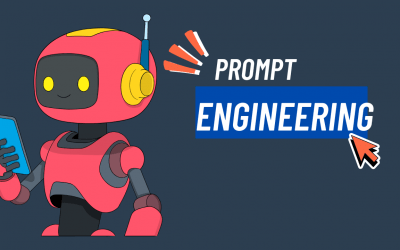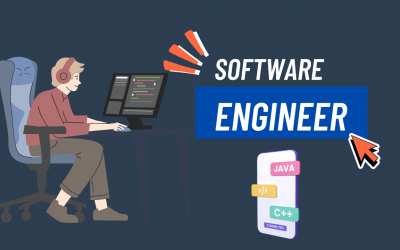Introduction
JavaScript, once dismissed as a simple scripting language, now powers complex applications across browsers, servers, and even native devices. With such ubiquity, the demand for clean, scalable, and performant JavaScript code has never been higher. Adhering to proven coding practices isn’t just about aesthetics—it’s about creating code that endures, scales, and performs reliably under pressure.
Write Clean and Readable Code
Consistent Naming Conventions
Code is read more often than it is written. Employing descriptive, consistent naming patterns for variables, functions, and classes is essential. For example, use camelCase for variables and functions (userProfileData) and PascalCase for classes (UserService). Avoid abbreviations that obscure meaning—clarity trumps brevity.
Avoiding Nested Hell and Long Functions
Deep nesting introduces cognitive overload. Instead of writing five levels of if and for blocks, consider early returns or extracting logic into smaller helper functions. Functions should ideally do one thing and do it well. If you find a function spanning more than 30 lines, it likely deserves decomposition.
Prefer Declarative Over Imperative
Rather than explicitly telling the program how to perform an action, declarative code focuses on what the outcome should be. For instance, using Array.prototype.map() is more expressive than manually constructing a new array with a for loop. Declarative syntax enhances legibility and reduces surface area for bugs.
Leverage Modern JavaScript Features
Embracing ES6+ Syntax
ES6 introduced syntactic sugar that improves expressiveness and reduces boilerplate. Features like let and const should replace the archaic var. Arrow functions (=>) offer concise syntax and lexical this, which helps avoid confusing behavior in asynchronous code.
Using Destructuring, Spread/Rest, and Arrow Functions Appropriately
Destructuring simplifies the extraction of object properties and array elements:
const { name, age } = user;
The spread (…) and rest (…args) operators streamline both composition and decomposition of data. Avoid misuse by ensuring these are used only when semantically appropriate to prevent unnecessary object cloning or confusion.
Utilizing Optional Chaining and Nullish Coalescing
These newer operators guard against null or undefined references without verbose checks. Optional chaining (?.) allows safe property access, while nullish coalescing (??) provides default values only when encountering null or undefined—ideal for distinguishing falsey but valid values like 0.
Adopt Robust Error Handling
Differentiating Between Expected and Unexpected Errors
Design your application to anticipate and gracefully handle foreseeable issues, such as user input validation errors. Unexpected errors—often indicative of programming flaws—should be logged, reported, and fixed rather than silently swallowed.
Try/Catch/Finally Best Practices
Reserve try/catch for code blocks likely to fail. Nesting them excessively or wrapping large chunks of logic can obscure failure points. Use finally to clean up resources such as timers or network connections, regardless of success or failure.
Custom Error Classes for Better Debugging
Create your own error classes extending the base Error object to represent domain-specific issues. This facilitates cleaner error differentiation and debugging:
class ValidationError extends Error {
constructor(message) {
super(message);
this.name = “ValidationError”;
}
}
Structure Code for Modularity
Principles of Modular Architecture
Modular code is easier to test, reuse, and refactor. A function, component, or module should encapsulate a single responsibility. Avoid God objects or monolithic files that handle multiple concerns simultaneously.
Using ES Modules and Separating Concerns
Split your application into ES modules (import/export) that encapsulate specific responsibilities—such as API handlers, UI logic, or utility functions. This fosters cleaner boundaries and reduces the risk of circular dependencies or unintended side effects.
Dependency Management with Minimal Coupling
Tightly coupled code is brittle. Design modules so they depend on abstractions, not concrete implementations. For instance, inject a logger function rather than importing one globally. This pattern improves flexibility and testability.
Performance Optimization Techniques
Throttling and Debouncing for Event Handlers
DOM-heavy applications benefit from rate-limiting frequent events. Throttling ensures that a function executes at most once every set interval, while debouncing ensures it’s only triggered after a pause. Libraries like Lodash provide clean implementations for both.
Lazy Loading and Code Splitting
To reduce initial load times, split code into chunks and load them on demand. This is particularly effective for large applications with multiple routes or feature flags. Tools like Webpack or Vite support dynamic imports effortlessly:
const LazyComponent = () => import(‘./MyComponent.js’);
Avoiding Memory Leaks and Unnecessary Re-renders
In SPAs, memory leaks often stem from lingering event listeners or stale closures. Use tools like Chrome DevTools to monitor memory snapshots. In frameworks like React, manage dependencies carefully in useEffect to avoid redundant executions or stale data rendering.
Testing and Linting for Code Quality
Importance of Automated Testing in JavaScript
Unit, integration, and end-to-end testing ensure confidence in application stability. Frameworks like Jest, Mocha, or Cypress enable testing at different layers. Focus on testing logic, not implementation details, to prevent brittle test suites.
Linting with ESLint and Prettier
Linters catch errors before runtime. ESLint enforces stylistic and functional rules, while Prettier auto-formats code to maintain consistency. Together, they automate cleanliness and prevent stylistic debates in teams.
Test-Driven Development Mindset
TDD isn’t just a methodology—it’s a mindset. Writing tests before implementation helps crystallize intent and edge cases. While not every project suits strict TDD, adopting the philosophy leads to more deliberate, robust code.
Conclusion
JavaScript’s flexibility is both a strength and a potential pitfall. Without rigorous coding practices, projects can quickly become unwieldy. By writing readable code, embracing modern syntax, managing errors intelligently, maintaining modularity, optimizing performance, and validating code with tests and linters, developers elevate their work from functional to professional. These practices are not just recommendations—they’re prerequisites for thriving in a world that increasingly runs on JavaScript.
Other Articles
The Art and Science of Prompt Engineering: Crafting the Future of AI Interaction
Beyond Keywords – Defining Prompt Engineering We stand at the precipice of a new paradigm in human-computer interaction. The rise of sophisticated Large Language Models (LLMs), such as GPT-4 and its contemporaries, has shifted our communication with technology from...
What is a Software Engineer
The Architects of Digital Reality Software engineers constitute the fundamental workforce orchestrating our technologically mediated existence. These professionals transmute abstract concepts into functional applications that permeate every facet of contemporary life....
Angular TypeScript: A Comprehensive Guide to Modern Web Development
Introduction to Angular TypeScript Integration Angular's symbiotic relationship with TypeScript represents a paradigmatic shift in modern web development methodologies. This powerful amalgamation emerged from Google's recognition that large-scale applications require...




